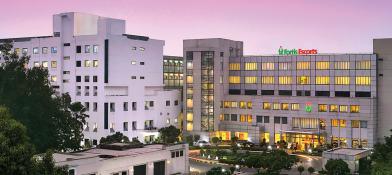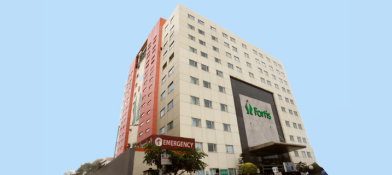Esophageal manometry
Overview:
Esophageal manometry is a procedure to check if your esophagus is functioning correctly or not. The esophagus in the body plays a very significant role. It is a long tube that attaches the stomach to the throat. When food is swallowed, the contraction in the esophagus pushes food down into the stomach.
Esophageal manometry measures these contractions to check if the esophagus is working properly or not. The test involves measuring the force and pattern with which the food is pushed down from the esophagus to the stomach, as well as the coordination between the esophageal muscles that are present at the top and bottom. The procedure includes inserting a thin tube called the catheter through the nose right to the stomach of the person. The tube has pressure sensors that help diagnose any malfunctioning or disorder in the esophagus.
Indications For Use:
There are multiple symptoms for which the doctor may recommend esophageal manometry. The symptoms include:
- Difficulty in swallowing.
- Regurgitation of food.
- Chronic and recurrent acid reflux.
- Heartburn and chest pain.
However, if the person has difficulty swallowing, the doctor may advise additional tests such as an X-ray or endoscopy to rule out any kind of inflammation or narrowing of the esophagus.
Esophageal manometry is advised to diagnose the following conditions:
Diffuse esophageal spasm: This is a rare complication where various, poorly coordinated muscle contractions occur in the esophagus, which causes difficulty in swallowing food.
- Achalasia: This is an uncommon condition that happens when the lower sphincter of the esophagus does not relax correctly and hence disrupts the entry of food into the stomach. This leads to problems in swallowing and causes regurgitation of food in the throat.
- Scleroderma: This is a rare progressive condition where the muscles in the lower esophagus stop functioning, causing gastroesophageal reflux.
- For Anti-reflux Surgery: When a person has been advised to undergo anti-reflux surgery, esophageal manometry may be required to rule out conditions like Sclero derma and Achalasia.
What Is The Procedure For Esophageal Manometry:
- The person undergoing the procedure should not eat or drink before the process begins. The doctor inquires about the health condition of the person and the medicines taken by them. Som medicines need to be stopped before the procedure.
- The procedure uses conventional manometry or high-resolution manometry, which uses additional pressure sensors to evaluate pressure changes accurately.
- The person is asked to change into a gown. However, conventional manometry requires no sedation as most people can tolerate the process without much discomfort.
- The technician sprays the throat of the person with a numbing medication or applies numbing gel to the nose.
- The catheter is inserted in the nose of the person. The tube usually doesn't interfere with breathing but can irritate the eyes and cause gagging or nosebleeds in some people.
- The patient can lie down or sit in a comfortable position.
- The person can keep sipping water while the catheter that is connected to a computer which records the details of the esophageal contractions.
- The patient is required to inhale and exhale deeply and they should not move. Once the measurements are completed the catheter is removed.
- The measurements include the strength and consistency of the muscle contractions that move food in the esophagus, how much these contractions slow down when they reach the lower esophageal sphincter to prepare for the final contraction to push the food out, and the amount of relaxation of the esophageal sphincter when food is swallowed.
- The procedure lasts about half an hour, and the person can resume normal activities.
- The doctor reviews the results and identifies the reason for the esophageal symptoms. They discuss the diagnosis with the patient in the follow-up schedule for further treatment modalities.
Esophageal Manometry And The Barium Swallow Test:
A lot of people get confused between the esophageal manometry and the barium swallow test. In the barium swallow test a person is asked to swallow a solution that highlights the inside portion of the esophagus and an X-ray is taken.
What Are The Abnormal Results After Esophageal Manometry:
Abnormal results may include:
- Excessive contraction or spasm in the muscles of the esophagus.
- Weak or no muscle contractions in the esophagus.
- Muscle contractions move to the lower esophageal sphincter without slowing down, causing premature swallowing.
- Failure of sufficient relaxation of the lower sphincter to let food pass
Risks and Complications in Esophageal Manometry:
Esophageal manometry is usually a safe procedure with few complications. However, there may be some complications that include:
- Gagging when the tube is inserted in the throat.
- Irritation in the eyes causes watery eyes.
- Feeling of discomfort in the nose and throat
- Mild side effects, like sore throat, blocked or stuffy nose, and nosebleed that lasts for a few hours.
Conclusion:
The primary work of the esophagus is to swallow food and push it down to the stomach without any regurgitation. If any of these processes are not working properly it can cause a lot of discomfort. Esophageal manometry can help diagnosing why the food is not being passed properly and why the muscles are not coordination with each other. This way it can provide doctors with the insights to decide the treatment. There are benefits and risks both in the procedure. The risks are not very serious and they can be taken care of with immediate assistance by the doctor or a professional. Like in all the procedures, a doctor’s advice is necessary and no decision should be taken without a detailed consultation and adherence to the doctor’s instructions.
Popular Searches :
Hospitals: Cancer Hospital in Delhi | Best Heart Hospital in Delhi | Hospital in Amritsar | Hospital in Ludhiana | Hospitals in Mohali | Hospital in Faridabad | Hospitals in Gurgaon | Best Hospital in Jaipur | Hospitals in Greater Noida | Hospitals in Noida | Best Kidney Hospital in Kolkata | Best Hospital in Kolkata | Hospitals in Rajajinagar Bangalore | Hospitals in Richmond Road Bangalore | Hospitals in Nagarbhavi Bangalore | Hospital in Kalyan West | Hospitals in Mulund | Best Hospital in India | | Cardiology Hospital in India | Best Cancer Hospital in India | Best Cardiology Hospital in India | Best Oncology Hospital In India | Best Cancer Hospital in Delhi | Best Liver Transplant Hospital in India
Doctors: Dr. Rana Patir | Dr. Rajesh Benny | Dr. Rahul Bhargava | Dr. Jayant Arora | Dr. Anoop Misra | Dr. Manu Tiwari | Dr. Praveer Agarwal | Dr. Arup Ratan Dutta | Dr. Meenakshi Ahuja | Dr. Anoop Jhurani | Dr. Shivaji Basu | Dr. Subhash Jangid | Dr. Atul Mathur | Dr. Gurinder Bedi | Dr. Monika Wadhawan | Dr. Debasis Datta | Dr. Shrinivas Narayan | Dr. Praveen Gupta | Dr. Nitin Jha | Dr. Raghu Nagaraj | Dr. Ashok Seth | Dr. Sandeep Vaishya | Dr. Atul Mishra | Dr. Z S Meharwal | Dr. Ajay Bhalla | Dr. Atul Kumar Mittal | Dr. Arvind Kumar Khurana | Dr. Narayan Hulse | Dr. Samir Parikh | Dr. Amit Javed | Dr. Narayan Banerjee | Dr. Bimlesh Dhar Pandey | Dr. Arghya Chattopadhyay | Dr. G.R. Vijay Kumar | Dr Ashok Gupta | Dr. Gourdas Choudhuri | Dr. Sushrut Singh | Dr. N.C. Krishnamani | Dr. Atampreet Singh | Dr. Vivek Jawali | Dr. Sanjeev Gulati | Dr. Amite Pankaj Aggarwal | Dr. Ajay Kaul | Dr. Sunita Varma | Dr. Manoj Kumar Goel | Dr. R Muralidharan | Dr. Sushmita Roychowdhury | Dr. T.S. MAHANT | Dr. UDIPTA RAY | Dr. Aparna Jaswal | Dr. Ravul Jindal | Dr. Savyasachi Saxena | Dr. Ajay Kumar Kriplani | Dr. Nitesh Rohatgi | Dr. Anupam Jindal
Specialties: Heart Lung Transplant | Orthopedic | Cardiology Interventional | Obstetrics & Gynaecology | Onco Radiation | Neurosurgery | Interventional Cardiology | Gastroenterologist in Jaipur | Neuro Physician | Gynecologist in Kolkata | Best Neurologist in India | Liver Transfer






























